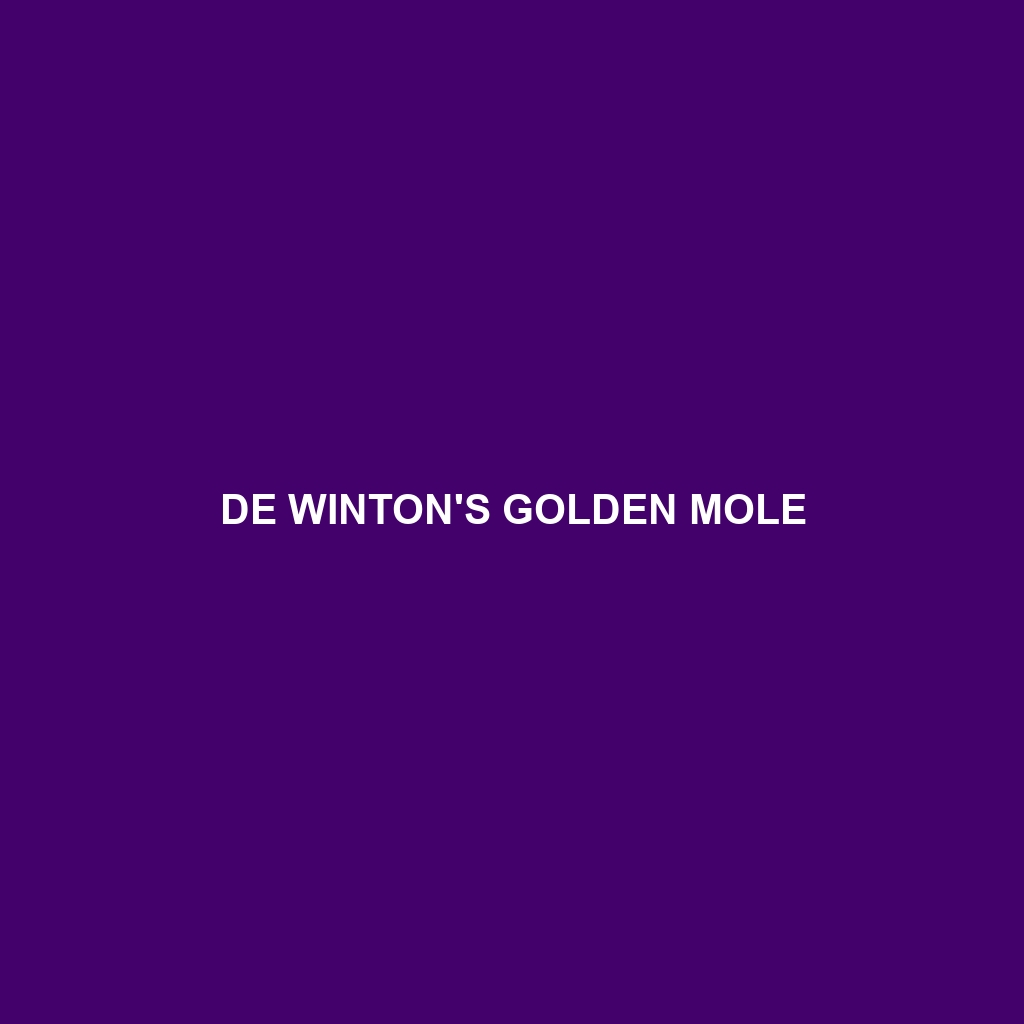De Winton’s Golden Mole
:
De Winton’s Golden Mole (Cryptochloris wintoni) is a fascinating and highly specialized small mammal endemic to South Africa. Belonging to the family Chrysochloridae, golden moles are not true moles; they are more closely related to tenrecs and other African insectivores. De Winton’s Golden Mole is an elusive and subterranean creature, known for its iridescent fur and exceptional burrowing abilities.
Physical Characteristics:
Size: De Winton’s Golden Mole is relatively small, typically measuring around 8-10 cm in length and weighing approximately 20-35 grams.
Coloration: Its fur is notably dense and silky, ranging from dark brown to an iridescent bronze or gold, which can shimmer in the light. This unique fur coloration is due to the structure of the hairs, which reflect light in a particular way.
Special Features: This golden mole has no external eyes or ears; its eyes are covered by skin, and its ears are small openings hidden by fur. Its body is streamlined for digging, with a leathery, pointed snout and powerful, spade-like forelimbs equipped with strong claws.
Behavior:
Social Interactions: De Winton’s Golden Moles are solitary animals, spending most of their time alone in their underground burrows. They are highly territorial and come together only during the breeding season.
Feeding Habits: These moles primarily feed on insects, larvae, and earthworms. They use their keen sense of touch and smell to locate prey within the soil.
Ecological Roles: As efficient insectivores, they play a crucial role in soil aeration and pest control. Their burrowing activity helps to mix soil layers and enhance nutrient distribution, benefiting plant growth.
Habitats:
Natural Habitats: De Winton’s Golden Mole is found in arid and semi-arid regions of South Africa, particularly in sandy soils where it can easily burrow.
Adaptations: Adapted to a subterranean lifestyle, they have a highly developed sense of touch and smell to navigate and forage in complete darkness. Their fur provides insulation against temperature extremes, and their low metabolic rate helps them survive in environments with scarce food resources.
Conservation Status:
Current Status: De Winton’s Golden Mole is listed as Vulnerable on the IUCN Red List. Their populations are declining due to habitat destruction, primarily from agricultural expansion and urban development.
Conservation Efforts: Efforts to conserve this species include habitat protection, promoting sustainable land use practices, and raising awareness about their ecological importance.
Fun Facts:
Despite having no external eyes, De Winton’s Golden Moles are incredibly adept at navigating their underground world.
Their fur’s metallic sheen is not due to pigmentation but to the microscopic structure of the hairs, which can reflect light in striking ways.
They are one of the few mammals that live almost exclusively underground, rarely coming to the surface except when dispersing to new territories or during rainstorms when their tunnels might flood.
In conclusion, De Winton’s Golden Mole is a remarkable example of evolutionary adaptation, showcasing unique traits that allow it to thrive in a challenging environment. Protecting this species is vital for maintaining the ecological balance in their native habitats.
